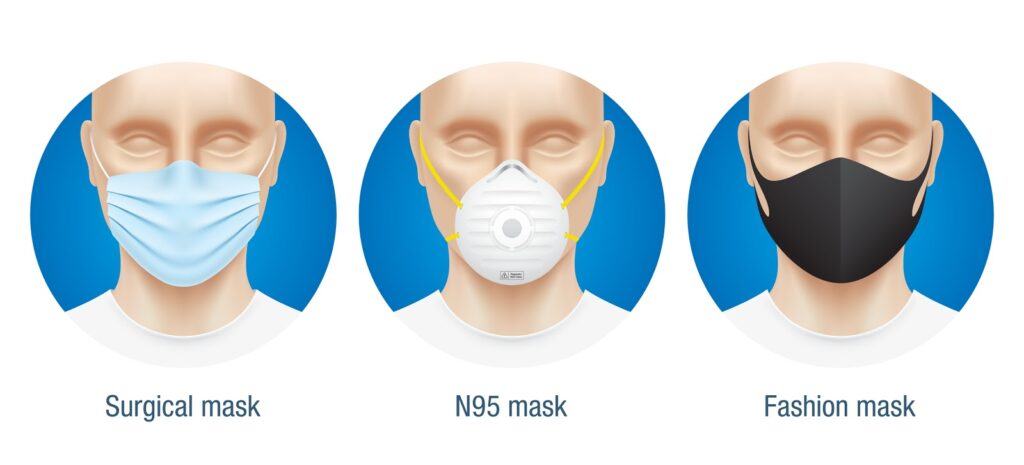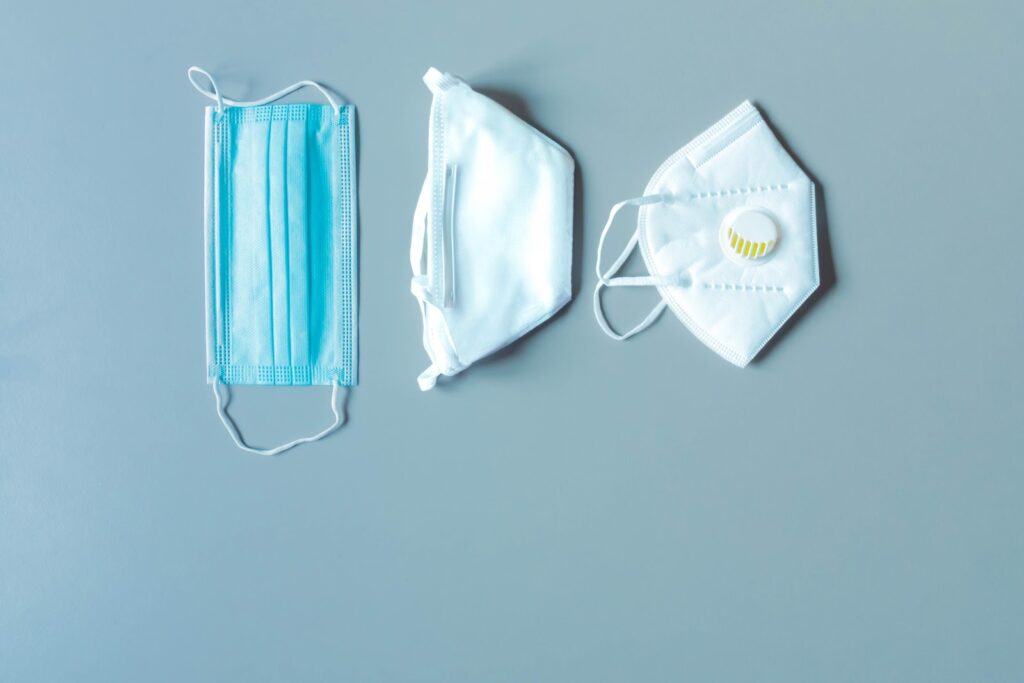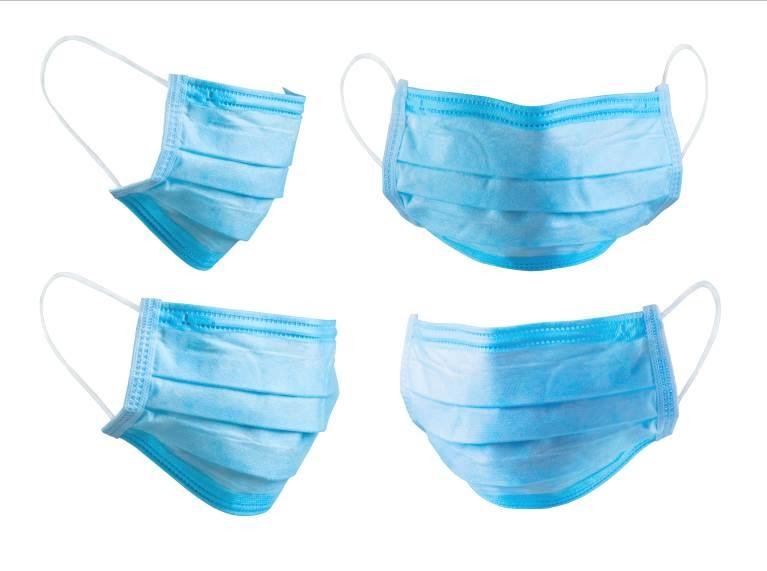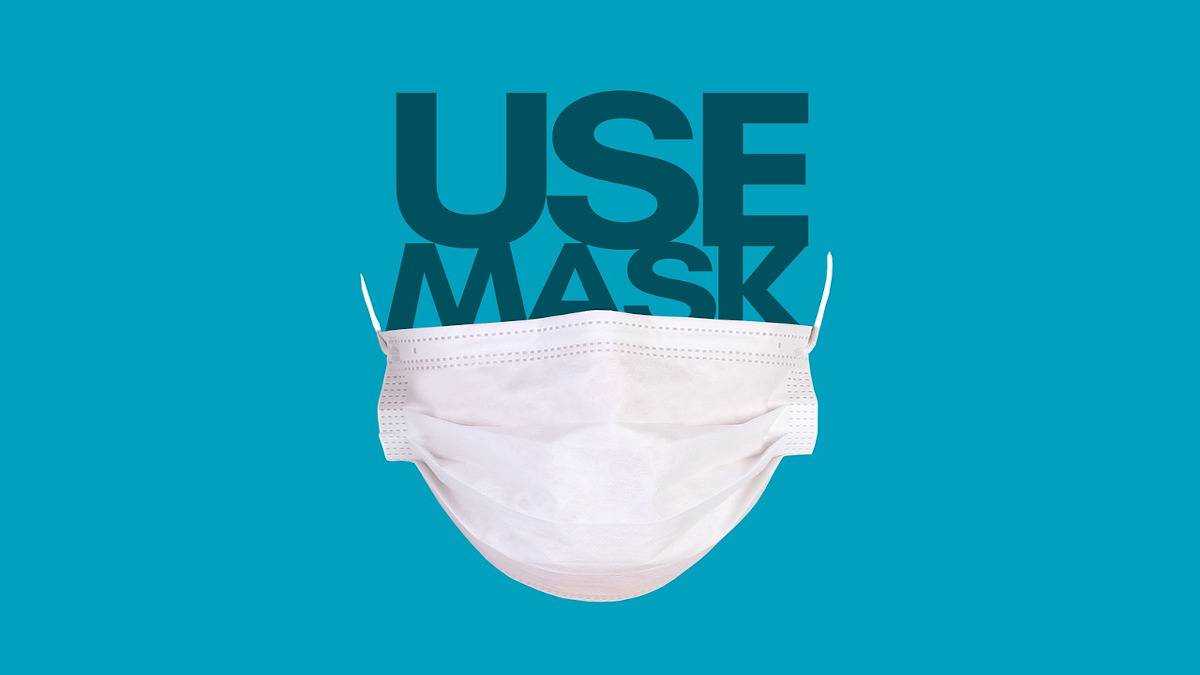Health experts have recommended people to wear face masks,especially when in public places and where it is difficult to maintain social distancing.
Why is wearing a face mask important?

Because it is possible to have coronavirus without showing symptoms, it is best to wear a face covering even if you think you are healthy. A mask helps contain small droplets that come out of your mouth and/or nose when you talk, sneeze or cough. If you have COVID-19 and are not showing symptoms, a face mask reduces your chance of spreading the infection to others. If you are healthy, a mask may protect you from larger droplets from people around you.
What are the different types of masks?

Different levels of masks are appropriate for different situations and needs.
- Professional Respirators
- N95 respirators are medical devices to prevent exposure to tiny droplets that can remain suspended in the air.
- N95 respirator masks fit tightly around the face. They filter out 95% or more of the smallest particles in the air, including virus and bacteria.
- The respirator itself is generally circular or oval in shape and is designed to form a tight seal to your face. Elastic bands help hold it firmly to your face.
- Some types may have an attachment called an exhalation valve, which can help with breathing and the buildup of heat and humidity.
- N95 respirators must be fit-tested before use to make sure that a proper seal is formed. If the mask doesn’t seal effectively to your face, you won’t receive the appropriate protection.
- After being fit-tested, users of N95 respirators must continue to perform a seal check each time they put one on.
- It’s also important to note that a tight seal can’t be achieved in some groups like children and people with facial hair.
- Procedural and Surgical Masks
- These are loose-fitting masks designed to cover the mouth and nose. Surgical masks are often blue with white borders.
- Although they are not close fitting, they are fluid resistant and provide some protection against larger respiratory droplets from coughs and sneezes.
- Primarily, they prevent the wearer from spreading infectious droplets to others.
- While the designs may vary, but the mask itself is often flat and rectangular in shape with pleats or folds. The top of the mask may contain a metal strip that can be formed to your nose.
- Elastic bands or long, straight ties help hold a surgical mask in place while you’re wearing it. These can either be looped behind your ears or tied behind your head.
- Surgical masks cannot be washed and should be disposed of after use in a responsible manner.


- Cloth Masks
- Cloth masks are best for people who don’t work in health care.
- They may lower the risk of people without symptoms transmitting the virus through speaking, coughing, or sneezing.
- They are better than not using any mask and offer some protection, especially where physical distancing is hard to maintain.
- Cloth face masks can be made at home as well from common fabric like cotton.
- It should have at least two layers of fabric material.
- Cloth masks should be washed after every use.
Conclusion
Masks provide a level of protection from coronavirus, depending on the type and situation in which it is worn. It should also be worn and taken off in the correct manner to lower the risk of passing on the infection or getting infected ourselves.
Special thanks to Dr.D.Kiranmai Devineni.MD FICOG Associate Professor. Consultant Obstetrician and Gynecologist for expert advice.





